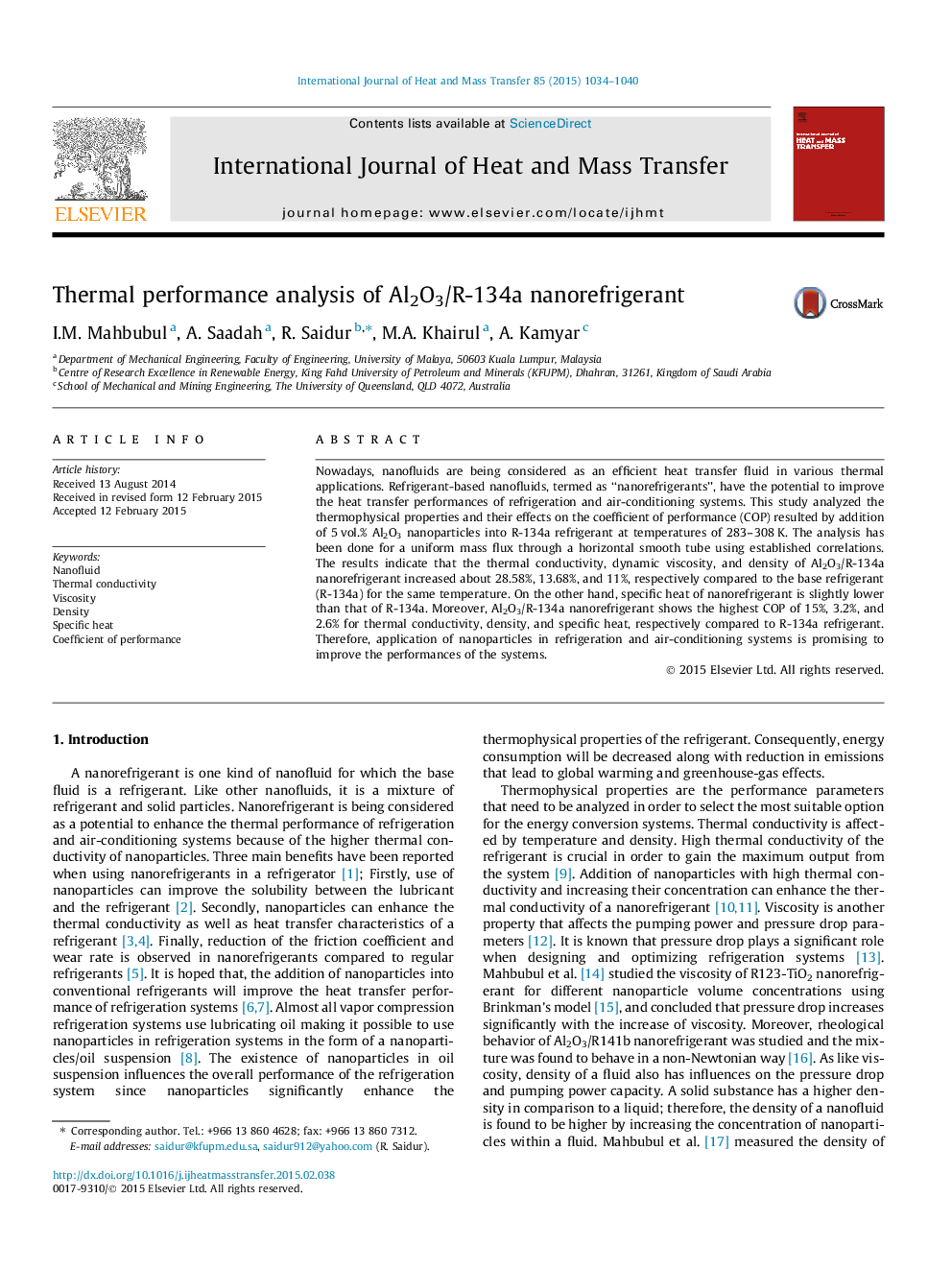| Article ID | Journal | Published Year | Pages | File Type |
|---|---|---|---|---|
| 7056735 | International Journal of Heat and Mass Transfer | 2015 | 7 Pages |
Abstract
Nowadays, nanofluids are being considered as an efficient heat transfer fluid in various thermal applications. Refrigerant-based nanofluids, termed as “nanorefrigerants”, have the potential to improve the heat transfer performances of refrigeration and air-conditioning systems. This study analyzed the thermophysical properties and their effects on the coefficient of performance (COP) resulted by addition of 5Â vol.% Al2O3 nanoparticles into R-134a refrigerant at temperatures of 283-308Â K. The analysis has been done for a uniform mass flux through a horizontal smooth tube using established correlations. The results indicate that the thermal conductivity, dynamic viscosity, and density of Al2O3/R-134a nanorefrigerant increased about 28.58%, 13.68%, and 11%, respectively compared to the base refrigerant (R-134a) for the same temperature. On the other hand, specific heat of nanorefrigerant is slightly lower than that of R-134a. Moreover, Al2O3/R-134a nanorefrigerant shows the highest COP of 15%, 3.2%, and 2.6% for thermal conductivity, density, and specific heat, respectively compared to R-134a refrigerant. Therefore, application of nanoparticles in refrigeration and air-conditioning systems is promising to improve the performances of the systems.
Related Topics
Physical Sciences and Engineering
Chemical Engineering
Fluid Flow and Transfer Processes
Authors
I.M. Mahbubul, A. Saadah, R. Saidur, M.A. Khairul, A. Kamyar,
